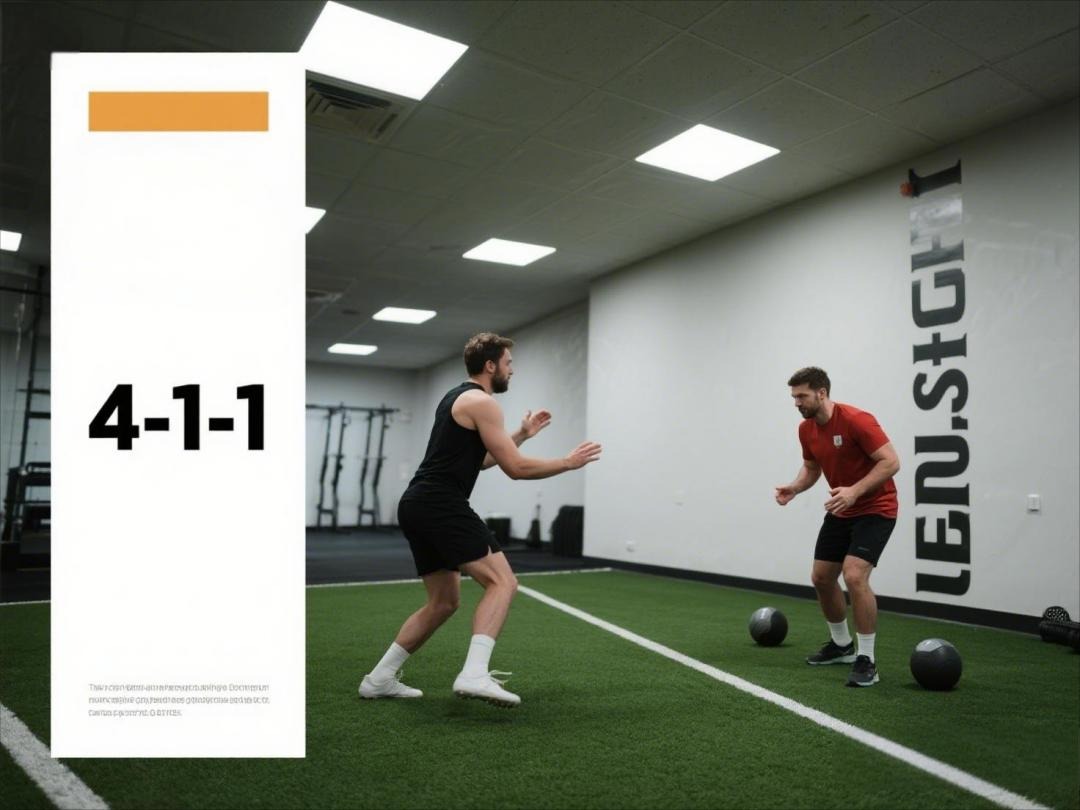If you're looking to torch fat faster than traditional cardio, the 4-1-1 workout might just be your new secret weapon. This high-intensity interval training (HIIT) method alternates between short bursts of all-out effort and brief recovery periods, keeping your metabolism revved long after you've finished sweating. Unlike steady-state cardio, which burns calories primarily during the workout, the 4-1-1 approach triggers excess post-exercise oxygen consumption (EPOC), meaning your body continues burning calories at an elevated rate for hours—or even days—afterward. But does it really outshine classic cardio? Let’s break it down.

The Science Behind the 4-1-1 Workout
This workout gets its name from its unique structure: 4 minutes of moderate-intensity exercise, followed by 1 minute of maximum effort, and capped with 1 minute of rest. The magic lies in how it manipulates your body’s energy systems. During those 4 minutes of moderate work, you’re primarily using aerobic pathways (oxygen-dependent energy production). But when you shift into that 1-minute sprint, your muscles scream for fuel faster than oxygen can deliver it, forcing your body to tap into anaerobic pathways. This switch-up creates a metabolic "afterburn" effect, where your body works overtime to restore balance—and burns serious calories in the process. Studies show HIIT can increase fat oxidation by up to 30% compared to steady cardio, making it a heavyweight contender for fat loss.
Why It Outperforms Steady-State Cardio for Fat Loss
Traditional cardio—like jogging or cycling at a consistent pace—does burn calories, but it’s not as efficient at targeting stubborn fat stores. Steady-state workouts often lead to plateaus because your body adapts to the repetitive motion, becoming more energy-efficient (read: burning fewer calories over time). The 4-1-1 method, on the other hand, keeps your system guessing. The intense intervals spike adrenaline and human growth hormone (HGH), both of which help break down fat cells. Plus, the post-workout calorie burn can last up to 48 hours, whereas steady cardio’s effects fade almost immediately after you stop. Translation? More bang for your workout buck.
How to Structure Your 4-1-1 Session
You can apply this formula to almost any exercise—running, cycling, rowing, or even bodyweight moves like burpees. Here’s a sample routine: Start with a 5-minute dynamic warm-up (think leg swings, arm circles, and light jogging). Then, cycle through 4 minutes of moderate effort (e.g., a brisk jog), 1 minute of all-out intensity (sprint like you’re being chased), and 1 minute of complete rest (walk or stand). Repeat this sequence 4–6 times, finishing with a 5-minute cooldown (stretching or slow walking). Pro tip: Use a timer or fitness app to track intervals, because pacing is key. Go too hard too soon, and you’ll gas out; slack off during the work periods, and you’ll cheat your results.
Who Should (and Shouldn’t) Try This Workout
While the 4-1-1 is a fat-melting beast, it’s not for everyone. If you’re new to exercise or have joint issues, ease into it with low-impact options like cycling or swimming. Pregnant women or people with heart conditions should consult a doctor first—HIIT stresses the cardiovascular system. But if you’re reasonably fit and bored of the treadmill grind, this could be your ticket to breaking plateaus. Even athletes use variations of 4-1-1 for conditioning, as it mimics the stop-start demands of sports like basketball or soccer.
Common Mistakes That Sabotage Results
Many folks jump into HIIT without mastering proper form, risking injury (hello, strained hamstrings). Others make the classic error of treating the "moderate" segments like a leisurely stroll—those 4 minutes should feel challenging, not comfy. Another pitfall? Neglecting recovery. Because the 4-1-1 is so demanding, overdoing it can lead to burnout or overtraining. Aim for 2–3 sessions weekly, max, with rest or low-intensity days in between. And don’t forget hydration and fueling: Skimp on water or eat junk post-workout, and you’ll undermine your efforts.
So, can the 4-1-1 workout melt fat faster than cardio? Absolutely—if you’re willing to embrace the sweat and stick to the structure. It’s not a magic pill, but for those short on time who want maximum results, this method delivers. Just remember: Pair it with balanced nutrition and adequate sleep, and you’ll be unstoppable. Now drop that treadmill safety clip and give it a shot—your metabolism will thank you.
























